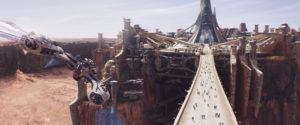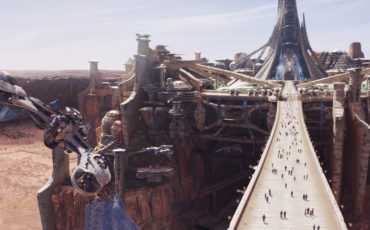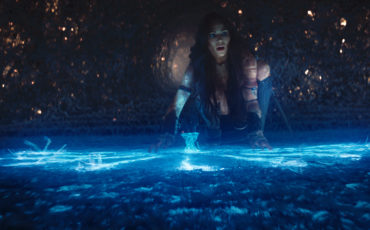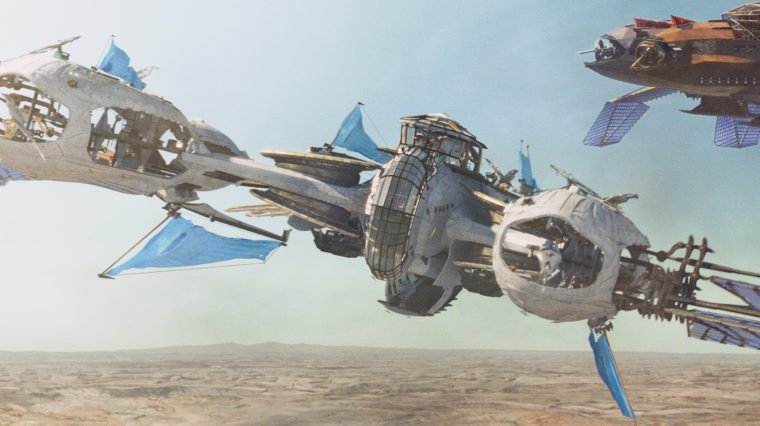
Animation World Network: John Carter
Go behind the scenes of Andrew Stanton’s first live-action feature and long-awaited Edgar Rice Burroughs adaptation.
Before Star Wars and Avatar and all the rest was Edgar Rice Burroughs’ influential Under the Moons of Mars, which later became the more familiar novel, A Princess of Mars, followed by 10 more in the « Barsoom » series. Pixar’s Andrew Stanton had waited most of his adult life for someone to make it into a movie, and finally decided to take the plunge himself after Disney purchased the rights at his urging. The result has garnered more attention for its marketing missteps and opening weekend box office disappointment (an estimated $30.6 million) than for its thrilling moviemaking and stellar VFX.
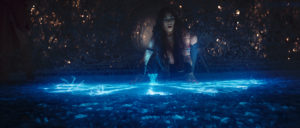 Indeed, Stanton has delivered the mythical goods, using the familiar iconic story and visual shorthand to remind us where it all came from and why John Carter’s stranger in a strange land conceit is so timeless. While many have quibbled about the narrative deficiencies (Stanton’s original script with Mark Andrews and Michael Chabon was more epic in scope but scaled back for budgetary reasons), the animation by Double Negative and Barsoom environments by Cinesite are praiseworthy. Additionally, Halon’s previs (under the supervision of owner Daniel Gregoire) amped up the White Ape gladiatorial fight sequence with a hand-held observational style that suited Stanton’s vision.
Indeed, Stanton has delivered the mythical goods, using the familiar iconic story and visual shorthand to remind us where it all came from and why John Carter’s stranger in a strange land conceit is so timeless. While many have quibbled about the narrative deficiencies (Stanton’s original script with Mark Andrews and Michael Chabon was more epic in scope but scaled back for budgetary reasons), the animation by Double Negative and Barsoom environments by Cinesite are praiseworthy. Additionally, Halon’s previs (under the supervision of owner Daniel Gregoire) amped up the White Ape gladiatorial fight sequence with a hand-held observational style that suited Stanton’s vision.
Cinesite completed 831 visual effects shots, which included creating and populating the majority of environments for the film. They also converted 87 minutes of the film into stereo 3-D. Cinesite’s senior VFX supervisor Sue Rowe spent several months on set in the UK and Utah; she was assisted by four other Cinesite supervisors. The sequences included Zodanga, a mile-long rusty metal tanker that crawls like a myriapod across the surface of Barsoom (supervised by Jonathan Neill); the beautiful and elegant city of Helium, with a huge glass palace in the middle (supervised by Christian Irles); the Thern sanctuary, a huge underground cave that forms around the characters as self-illuminating blue branches as they walk through it (supervised by Simon Stanley-Clamp); and the huge aerial battle between Zodanga and Helium. Supervised by Ben Shepherd, each side’s airships use solar wings to travel on light. Cinesite’s team also provided explosions, fire, digital doubles, a CG Thark City environment and set extensions based on photogrammetry.
For Zodanga (designed by VFX art director Ryan Church), there was a lot of attention devoted to shader resource files, per frame asset visibility and prman XML stats analysis. One of the major challenges of Zodanga is that it’s a city on legs, so the design of the legs, scale, materials and rigging had to match the time period of the story, while the surfaces and weathering had to make it look like they’d seen years of service on the Mars landscape. The textures, surfaces and edges were detailed to give a dirty, industrial feel using a combination of Photoshop, Mari and Mudbox in tandem with in-house shaders and lighting development. Since Zodanga is a very boxy, utilitarian-looking city, Cinesite needed to break up a lot of the straight edges to show wear and tear on the concrete. This was done by modeling and texturing using Mudbox as well as other techniques. Compositing used a template script in Nuke as a starting point for every shot. This was populated by around 60 layers to give compositing a very granular control to be able to tweak the lighting in Nuke.
Helium (also designed by Church) proved very time consuming and render heavy to get full 3D renders; due to the sheer volume of assets required, Cinesite developed a proprietary hierarchical caching system, allowing for grouping and duplication of individual models within larger structures. The difficult part was accessing each different stage of this hierarchy, which was made possible by various filtering options. Each asset also had its own lighting and shading file, which was easily adjustable even from the top node of the hierarchy. Cinesite also developed level of detail files for modeling and texturing which could be manually adjusted or calculated automatically through a shot camera. The fully CG Helium environment was a huge challenge as this would be the look of the Helium city that would be reused in a number of other sequences. Both Helium Major and Helium Minor required high-res textures for parts of the city that they would push in on.
In the end, Cinesite achieved for Helium’s Palace of Light what Stanton termed « the jewel of the city. »
« Andrew was so ready for the CG process that he was ready to take on John Carter, » Chiang concludes. « He knew the fundamentals and his expertise was invaluable. »

